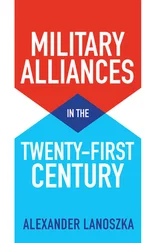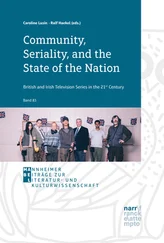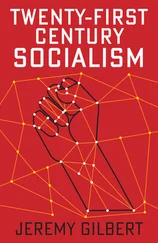The composite dialogue process between the two countries was launched in January 2004, following the commitment made by Pakistan at that time that it would not permit territory under its control to be used to support terrorism against India in any manner. The dialogue covered eight subjects: peace and security, including confidence-building measures; Jammu and Kashmir; terrorism and drug trafficking; friendly exchanges; economic and commercial cooperation; the Wullar barrage/Tulbul navigation project; Sir Creek; and Siachen. That six-year-old commitment by Pakistan lay in shreds after the overwhelming evidence of the involvement of elements in Pakistan in executing the Mumbai terror attack of November 2008, and in the conspiracy that planned, funded and launched it, coupled with an increase in ceasefire violations, continued infiltration across the LoC and the attacks on the Indian embassy in Kabul in July 2008 and October 2009, as well as the murderous assault in early 2010 on a residence housing Indian aid workers. Given the immense strain all this has placed on India — Pakistan relations in general and on the dialogue process in particular, it took a great deal of courage and statesmanship for the Indian leadership to resume the dialogue process. Though progress has been slow, the fact that it is happening at all is of momentous significance — but the incidents enumerated above point to the very fragility of the peace process, since so much is stacked against it.
It is worth recalling that the two countries have in fact come to agreement since the late 1980s on a number of issues. These have included such difficult and sensitive challenges as the protection of nuclear facilities, the inauguration of bus services between Indian and Pakistani cities, illegal immigration and the exchange of prisoners, and the establishment of trading routes and entry points to each other’s territories. There have also been extensive discussions, both formal and through a ‘back channel’, as well as in the form of Track-II discussions featuring prominent parliamentarians, scholars, retired officials and commentators, between the two countries. However, the lack of trust between the governments and an aversion to taking political risk on both sides have meant that these have not culminated in agreements, even though the sensitive Kashmir issue has been discussed threadbare in all these processes.
Pakistan’s evasive responses and denials in response to India’s requests for cooperation in exposing the conspiracy behind the Mumbai terror attack and bringing all its perpetrators to justice had led to a sadly evident deterioration in bilateral relations. While India has gingerly resumed contact at various levels with Pakistan, a sustained and intense peace process requires a demonstration by Pakistan of a change of heart — and, more important, of a political will for peace. Of this there has been little evidence in recent years — quite the contrary. The inability or unwillingness of the Pakistani government to prevent its soil from being used to mount attacks on another state seriously undermines its own sovereignty, not just its credibility. The result is the slightly absurd phenomenon of the victims’ government wanting to talk to the perpetrators’ government, while the latter consistently fails to give the former anything to enable it politically to explain to its own voters why we are doing the talking.

The lack of political will within the Pakistani establishment to take firm action against terrorists is not hard to explain. One possible explanation is the sinister one, that those in power are happy to allow the terrorists to run free and wild, as long as they are only threatening India. Unleashing terrorism on India has long been seen by elements in Islamabad as a strategy that combines the merits of being inexpensive, low risk and effective, while doing enough damage to throw the adversary repeatedly off-balance. And should India be tempted to respond in kind to the repeated bleeding of its citizenry by Pakistani groups and their proxies, there is always the threat of a nuclear conflagration to bring the rest of the world’s pressure on India to absorb the pain rather than retaliate militarily.
The more charitable explanation is that the rulers of Pakistan do not feel able to challenge militant groups and their leaders because they have become too popular with a radicalized and pro-Islamist populace, and so they fear that the political price to be paid domestically for opposing the terrorists would be too high. While India would love to see a Pakistani government that is determined to translate into concrete action the friendly sentiments repeatedly expressed by leaders like President Zardari, New Delhi has seen far too much evidence of a gap between profession and practice — and also of the vast gulf between what Pakistanis say to Indians in private and what they consider politically expedient to utter in Pakistan in public.
The media on both sides has also contributed to the atmosphere of confrontation between the two states. Television is a particular culprit. Though Indians tend to blame the Pakistani channels for consistently spewing venom against India and providing a platform to those who do, the standards may first have been lowered in India. A Pakistani television executive, Fahad Hussain, who has launched more than one channel in his country and studied India’s media operations before doing so, put it bluntly to me: ‘The reason we are hawkishly anti-India,’ he said, ‘is that we know it sells, and guess who taught us that.’ He added, ‘I launched channels that love to bash India because Indian media has taught us that being popular is more important than being responsible.’ He went on to suggest that Pakistani politicians who are inclined to promote peace with India are circumvented by the hostility of the media, which restricts their options. This may be a somewhat cynical view, but it has a strong kernel of candour that obliges us to take it seriously.
The hardening of public opinion on both sides is undoubtedly a factor in the dismal state of the relations between India and Pakistan. In Pakistan, at least, the media has gone from reflecting attitudes to shaping them in a manner that has made it a significant obstacle to peace. The print media, especially in Urdu, is not much better. Despite the ‘Aman ki Asha’ (Wish for Peace) campaign conducted by two newspaper chains (one in each country) the very same publications carry far more negative articles about the other country than they do the positive ones under the ‘Aman ki Asha’ rubric. Textbooks in Pakistan, which since the days of Zulfikar Ali Bhutto speak of a ‘5000 year war with India’, also contribute to the general attitude of hostility in the country to the neighbour to which it was once conjoined. Ordinary members of the Pakistani public may be prepared to live in peace with Indians, but the hatred being instilled in them from a variety of public platforms will need to be overcome if peace is to have a chance.

The contradiction between private attitudes and public posturing was readily apparent in the life and career of Benazir Bhutto of the Pakistan People’s Party, whose assassination in late 2007 saw the international press posthumously conferring sainthood on the telegenic politician. But the widely expressed view that Benazir epitomized Pakistan’s hopes for democracy and peace with India seriously overstates both what she represented and the implications of her demise.
The principal consequence of Benazir Bhutto’s death was the setback it has dealt to the US-inspired plan to anoint her as the acceptable civilian face of continuing Musharraf rule. The calculations were clear: Musharraf was a valuable ally of the West against the Islamist threat in the region, but his continuing indefinitely to rule Pakistan as a military dictator was becoming an embarrassment. The former Chief Martial Law Administrator had to doff his uniform — long overdue, since he was three years past the retirement age for any general — and find a credible civilian partner to help make a plausible case for democratization. Benazir — well spoken, well networked in Washington and London, and passionate in her avowals of secular moderation, however self-serving — was the chosen one.
Читать дальше













